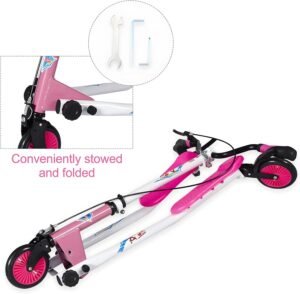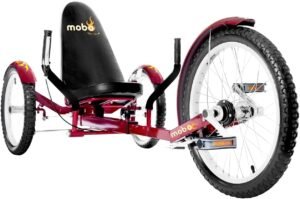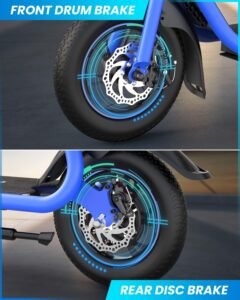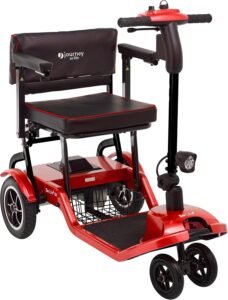
Maintaining your scooter doesn’t have to be a daunting task. By following a few simple tips, you can keep your scooter running smoothly and prolong its lifespan. In this article, we will explore some essential tips for basic scooter maintenance. From regular cleaning to checking the tires and brakes, these tips will ensure that your scooter stays in top shape, allowing you to enjoy many worry-free rides. So, let’s get started and keep your scooter in excellent condition!
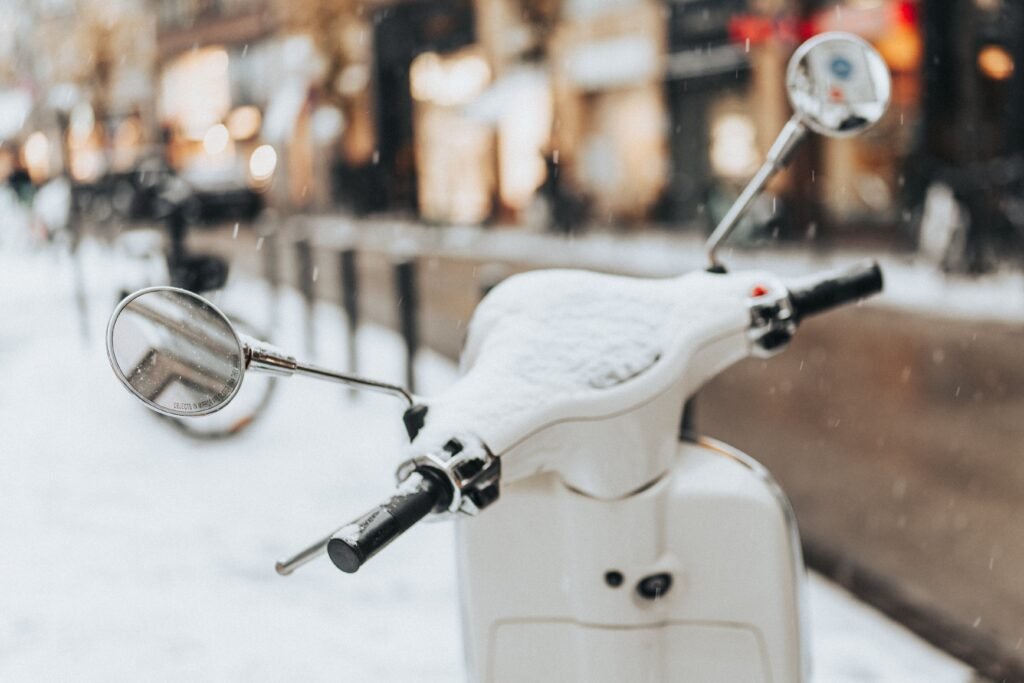
This image is property of images.pexels.com.
Check out our product reviews!
Checking the Oil
One of the most important routine maintenance tasks for your scooter is checking and changing the oil. This ensures that the engine continues to run smoothly and effectively. To begin, start by checking the oil level.
Checking the Oil Level
To check the oil level, make sure the scooter is on a flat surface and is not running. Locate the oil dipstick, which is usually on the side of the engine. Remove the dipstick, wipe it clean with a cloth, and then reinsert it fully. Remove it again and check the oil level. Ideally, the oil should be between the minimum and maximum markers on the dipstick. If the oil is below the minimum mark, it’s time to add more.
Changing the Oil
Regularly changing the oil is essential for maintaining the longevity of your scooter’s engine. Begin by warming up the engine to ensure the oil flows more easily. Once warm, locate the drain plug at the bottom of the oil pan. Place an oil pan beneath it to catch the oil. Unscrew the drain plug and allow the oil to drain completely. Replace the drain plug once it has finished draining. Next, remove the old oil filter and replace it with a new one. Finally, pour the correct amount and type of oil into the engine through the oil fill hole. Remember to dispose of the used oil properly.
Choosing the Right Oil
Using the correct type of oil is crucial for your scooter’s performance. Consult the scooter manufacturer’s manual to determine the appropriate oil viscosity and specification for your scooter. Factors such as temperature and engine type may affect the type of oil recommended. It is also important to select oil that is specifically designed for four-stroke engines, as scooters typically use this type of engine. Investing in good quality oil will help to keep your scooter’s engine running smoothly and efficiently.
Inspecting the Tires
Proper tire maintenance is essential for ensuring a safe and comfortable ride. Regularly inspecting your scooter’s tires will help identify any potential issues before they become major problems.
Checking Tire Pressure
Maintaining the correct tire pressure is crucial for both safety and fuel efficiency. Use a tire pressure gauge to check the pressure regularly, preferably when the tires are cold. Refer to the scooter manufacturer’s manual for the recommended tire pressure. If the pressure is too low, use an air compressor to inflate the tire. On the other hand, if the pressure is too high, release some air from the tire. Remember to check the pressure of all four tires, including the spare if your scooter has one.
Checking Tread Wear
Inspecting the tread wear of your scooter’s tires is essential for maintaining traction and avoiding accidents. Use a tread depth gauge or a penny to measure tread depth. Place the penny into the tread groove with Lincoln’s head facing downward. If you can see the top of Lincoln’s head, it’s time to replace the tires. Uneven tread wear may indicate an alignment or suspension issue, so be sure to check for any signs of irregular wear.
Replacing Worn-out Tires
When your scooter’s tires are worn-out, they no longer provide adequate traction, which can compromise your safety on the road. It is important to replace them promptly. When selecting new tires, choose ones that are compatible with your scooter’s make and model. Additionally, consider the type of riding you do and the weather conditions you typically encounter. Investing in high-quality, durable tires will not only enhance your safety but also provide a smoother and more enjoyable ride.

This image is property of images.pexels.com.
Check out our product reviews!
Examining the Brakes
Ensuring that your scooter’s brakes are in proper working order is crucial for your safety on the road. Regularly examining the brakes will help identify any issues before they become hazardous.
Checking Brake Pads
Inspecting the brake pads is essential for determining their condition. Start by visually examining them through the caliper openings. If the brake pads appear excessively worn or are less than 1/8 inch thick, they need to be replaced. Additionally, listen for any unusual squeaking or grinding noises while applying the brakes, as these may indicate worn-out brake pads.
Inspecting Brake Fluid
Checking the brake fluid level and condition is an important part of brake system maintenance. Locate the brake fluid reservoir, typically found on the handlebars or near the engine. Ensure the scooter is on a level surface and remove the reservoir cap. The brake fluid level should be between the minimum and maximum markers on the reservoir. If it is below the minimum mark, it’s time to add more fluid. Additionally, inspect the fluid for any signs of contamination, such as a milky appearance or strong odor. If the fluid appears contaminated, it is recommended to have a professional inspect and flush the brake system.
Adjusting Brake Cables
Properly adjusted brake cables ensure that the brakes engage and release smoothly. Inspect the cables for any signs of fraying or kinks, as these may affect their performance. If necessary, adjust the brake cables according to the manufacturer’s guidelines. Ensure that the brakes engage and disengage smoothly without excessive play or binding. If you are unsure about adjusting the cables, it is advisable to seek professional help to ensure your brakes are properly functioning.
Maintaining the Battery
A well-maintained battery is essential for starting your scooter reliably. Regularly inspecting and maintaining the battery will help prolong its lifespan and prevent any unexpected starting issues.
Cleaning the Battery Terminals
Over time, corrosion can build up on the battery terminals, hindering the connection between the battery and the scooter’s electrical system. To clean the terminals, start by disconnecting the battery cables, beginning with the negative (-) cable followed by the positive (+) cable. Mix a solution of baking soda and water, and use a wire brush to scrub the terminals thoroughly. Rinse the terminals with clean water and dry them with a cloth. Apply a thin layer of dielectric grease to the terminals to inhibit further corrosion before reconnecting the cables.
Testing the Battery Voltage
To ensure your battery is performing optimally, regularly test its voltage using a multimeter or battery tester. Start by turning off the scooter and disconnecting the battery cables. Then, connect the multimeter or battery tester to the battery terminals, ensuring the positive (+) and negative (-) connections correspond correctly. Check the voltage reading, which should ideally be within the range recommended by the scooter manufacturer. If the voltage is below the recommended range, it may be time to replace the battery.
Replacing the Battery
Batteries have a limited lifespan, and eventually, they will need to be replaced. Signs that your scooter’s battery may be on its way out include slow engine cranking or difficulty starting the scooter. When selecting a new battery, ensure that it matches the specifications and requirements of your scooter’s make and model. Follow the manufacturer’s guidelines for installing the new battery, connecting the cables correctly, and securing the battery in place. Proper battery maintenance and timely replacement will help ensure reliable starts and avoid getting stranded unexpectedly.

This image is property of images.pexels.com.
Checking the Air Filter
The air filter plays a critical role in maintaining clean air flow to the engine, which is essential for optimal performance and fuel efficiency. Regularly inspecting and cleaning or replacing the air filter will help keep your scooter running smoothly.
Locating the Air Filter
The air filter is typically located in the air filter box, which is situated near the engine. Consult the scooter manufacturer’s manual to locate the specific air filter compartment for your make and model. In many scooters, accessing the air filter box may require removing the scooter’s body panels.
Cleaning or Replacing the Air Filter
Inspect the air filter for any signs of dirt, dust, or debris accumulation. If the air filter appears clogged or excessively dirty, it needs to be cleaned or replaced. To clean a foam air filter, start by removing it from the air filter box. Gently wash the filter with a mild detergent and warm water, ensuring all dirt and debris are removed. Once clean, rinse it thoroughly and allow it to air dry completely. If the air filter is made of paper or has noticeable damage, it’s best to replace it with a new one. Always follow the manufacturer’s recommendations for air filter maintenance and replacement intervals.
Inspecting the Drive Belt
The drive belt is an essential component of your scooter’s transmission system and is responsible for transferring power from the engine to the rear wheel. Regularly inspecting the drive belt’s condition and tension will help ensure smooth and efficient scooter operation.
Checking Belt Tension
The correct tension of the drive belt is crucial for its proper functioning. Start by consulting your scooter manufacturer’s manual for the recommended belt tension specifications. In general, the belt tension can be checked by applying gentle pressure to the belt midway between the two pulleys. The deflection should be within the manufacturer’s specified range. If the belt is too loose or too tight, it may affect your scooter’s performance and longevity. Adjust the tension as needed by following the manufacturer’s guidelines or seek assistance from a professional if unsure.
Replacing a Worn-out Belt
Over time, the drive belt will naturally wear and may need to be replaced. Signs of a worn-out belt include excessive cracking, fraying, or smooth and shiny areas on the belt. Additionally, if the belt slips or makes unusual noise during operation, it may be time for a replacement. Replace the belt with one that matches your scooter’s make, model, and specific transmission system. Be sure to follow the manufacturer’s recommendations for replacing the belt, including the required tension adjustment.
Lubricating Moving Parts
Proper lubrication of moving parts is essential for reducing friction and ensuring smooth operation. Regularly applying the appropriate lubricant to key areas of your scooter will help prolong its lifespan and maintain optimal performance.
Finding Appropriate Lubricants
When selecting lubricants for your scooter, consult the manufacturer’s manual to ensure you choose the correct type and grade. Different parts of the scooter may require different lubricants, such as chain lubricant for the drive chain and grease for bearings and pivots. High-quality lubricants specifically formulated for motorcycles and scooters offer superior performance and longevity.
Applying Lubricant to Key Areas
Identify the key areas that require lubrication, such as the drive chain, throttle cable, brake pivot points, and various bearings. Follow the manufacturer’s guidelines for applying the lubricant to each specific area. Take care not to over-apply the lubricant, as excess lubrication may attract dust and dirt, leading to premature wear. Regularly inspect the lubricated areas to ensure proper lubrication and make adjustments as needed. Proper lubrication will not only extend the lifespan of moving parts but also contribute to a smoother and more enjoyable ride.
Verifying the Lights and Signals
Properly functioning lights and signals are crucial for your safety on the road, as they inform other drivers of your intentions. Regularly verifying the lights and signals of your scooter ensures that they are in good working condition.
Testing All Lights
Start by turning on the scooter’s ignition and activating each light individually. Verify that the headlights, taillights, turn signals, brake lights, and any other lights are functioning properly. If any light is dim, flickering, or not working at all, check the corresponding bulb for damage or looseness and replace if necessary. It is also important to check the condition of the wiring and connectors, looking for any signs of damage or corrosion.
Checking Turn Signals
Ensure that both the front and rear turn signals are visible and functioning correctly. Stand in front of the scooter and activate the left turn signal to verify that the front and rear left signals are working and illuminate properly. Repeat the process for the right turn signal to ensure all signals are in good working order. If a turn signal fails to function correctly, check the bulb and connections for any issues. Additionally, inspect the switch mechanism for smooth operation and replace if necessary.
Examining the Ignition System
The ignition system is responsible for starting and powering your scooter. Regularly examining the ignition system components will help ensure reliable starts and optimal performance.
Checking Spark Plugs
Spark plugs play a vital role in igniting the air-fuel mixture in the scooter’s engine. Inspecting the spark plugs can provide valuable insight into the engine’s condition. Consult your scooter manufacturer’s manual for the recommended spark plug replacement interval and specifications. Remove each spark plug one at a time and inspect it for any signs of fouling, wear, or damage. Clean or replace the spark plugs as necessary and ensure they are tightened to the recommended torque.
Inspecting Ignition Wires
The ignition wires play a crucial role in delivering the electrical current from the ignition coil to the spark plugs. Inspect the ignition wires for any signs of damage, such as cracks, breaks, or fraying. Additionally, check the connections at both ends of the wires, ensuring they are secure and free of corrosion. If any issues are detected, it is advisable to replace the ignition wires to ensure proper functioning of the ignition system.
Cleaning the Scooter
Regularly cleaning your scooter not only enhances its appearance but also helps maintain its condition and longevity. Follow these steps to keep your scooter looking its best:
Washing the Body
Start by rinsing the scooter with clean water to remove any loose dirt or debris. Use a mild detergent or soap specifically formulated for motorcycles or scooters, as regular household cleaners may damage the paint or finish. Gently scrub the body with a soft sponge or cloth, paying attention to any areas with heavy grime or bugs. Rinse the scooter thoroughly with clean water, ensuring all soap residue is removed. Dry the scooter with a soft cloth or allow it to air dry. Finally, apply a protective wax or polish to enhance the shine and protect the paint.
Detailing the Scooter
For a more thorough cleaning and restoration, consider detailing your scooter. This involves cleaning and rejuvenating various parts such as the wheels, chrome accents, and plastic components. Use specialized cleaning products designed for each specific area. For example, use a wheel cleaner to remove brake dust and grime from the wheels and a chrome polish to restore shine to any chrome parts. Additionally, use a plastic cleaner and protectant to rejuvenate plastic components and protect them from UV damage. Detailing your scooter periodically will not only keep it looking great but also help maintain its value over time.
In conclusion, following these essential tips for basic scooter maintenance will help ensure that your scooter runs smoothly and reliably for years to come. Regularly checking the oil, inspecting the tires, examining the brakes, maintaining the battery, checking the air filter, inspecting the drive belt, lubricating moving parts, verifying the lights and signals, examining the ignition system, and cleaning the scooter are all vital aspects of proper scooter maintenance. By incorporating these maintenance tasks into your routine, you can enjoy a safe, comfortable, and enjoyable ride every time you hop on your scooter. Remember, a well-maintained scooter is a happy scooter!








